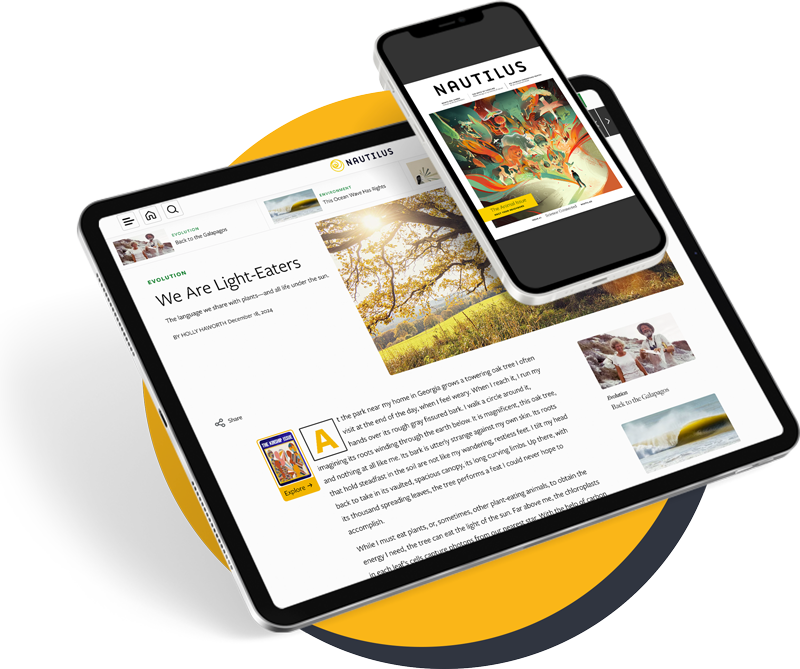Every year, the illegal wildlife trade ensnares millions of wild birds in a vast global industry. Poaching for the black market affects a huge diversity of life, including nearly half of all bird species. Songbirds and parrots are particularly popular targets, with thousands illegally caught and traded every year.
But proving that a bird sold as a pet was poached from the wild, rather than born in captivity, is difficult. Tracking a bird’s origins, says Katherine Hill, an invasive species biologist at the University of Adelaide in Australia, relies on paperwork, “which can obviously be forged relatively simply.”
Over the past few decades, however, scientists have been developing a way to analyze a bird’s feathers to trace its history. Known as stable isotope analysis, the approach involves investigating the chemical elements stored in an animal’s tissues.
Stable isotope analysis works on birds because their feathers lock in identifiable chemical signatures as they grow, creating a snapshot of a period of the bird’s life, Hill says. Captive birds, for example, tend to eat corn and sorghum. Wild birds eat more fruits, nuts, and wild plant seeds. These differences in diet alter the chemicals in the birds’ feathers.
Scientists have used stable isotope analysis to study bird diets for several years. But earlier projects aiming to tease out birds’ origins largely focused on a few endangered parrot species with limited diets, small populations, or small ranges. Hill wanted to see if she could apply the technique to parrot species with relatively large geographic ranges that eat a wider variety of foods. In particular, she focused on four common Australian parrots that are popular as pets—galahs (Eolophus roseicapilla), sulphur-crested cockatoos (Cacatua galerita), little corellas (Cacatua sanguinea), and long-billed corellas (Cacatua tenuirostris).
Stable isotope analysis could accurately distinguish between wild and captive galahs nearly 90 percent of the time.
Beginning in December 2020, Hill set out around Adelaide, where she scanned the streets for the vibrant white, yellow, or pink shocks of wild parrot feathers. COVID-19-related lockdowns meant it was difficult for Hill and her colleagues to visit zoos or aviaries to collect the feathers of captive and wild parrots. Instead, they created a community-science initiative to collect the feathers of captive parrots from the public. Spreading the word through social media, local news organizations, and other places likely to catch the eyes of animal lovers, the scientists harnessed dozens of volunteers from across South Australia who collectively sent in thousands of feathers they found in the wild or gathered from the bottom of their pets’ cages. The project became a way for people to connect with nature, Hill says.
Pooling the feathers by species, and splitting them by whether they came from wild or captive birds, Hill and her colleagues found that stable isotope analysis could accurately distinguish between wild and captive galahs nearly 90 percent of the time, and the other parrot species 74 percent of the time. The isotope research from those four parrot species will provide data that other scientists can use in future studies as well.
The technique offers a potent way to identify poached birds. It is possible, says Hill, to cheat the test. If a captive bird is fed a diet similar to what a wild one would eat—or if wild birds have particularly diverse diets or access to something similar to pet food—it could muddy the results. But when used with other tools, says Hill, isotope analysis could tip off law enforcement that a bird might have been poached, giving the authorities reason to investigate further.
The value of stable isotope analysis is also constrained by time, Hill says. Because birds regularly grow and molt their feathers, each piece of plumage only reflects the time between molts. For many parrots, that’s about a year. This means the technique would be best at identifying birds that were captured from the wild within that time frame.
Astrid Andersson, a conservation biologist at the University of Hong Kong, says the effectiveness of stable isotope analysis to distinguish between captive and wild parrots aligns with previous research, including her own work on a Chinese population of yellow-crested cockatoos.
“It’s really important to expand the number of species that have this stable isotope data,” says Andersson. Different species need their own stable isotope datasets, she says. “We need to build up the database that authorities could potentially refer to.”
Wildlife authorities don’t often use stable isotope analysis in their investigations and, to date, the technique isn’t being regularly used in bird-poaching investigations. But analyzing feathers could be a powerful new tool in the anti-poaching toolbox, says Kate Brandis, a wildlife forensics expert at the University of New South Wales in Australia. “This is still a developing area,” she says. But research like Hill’s is “demonstrating that this does have a place in fighting the illegal wildlife trade.” ![]()
This story originally appeared in bioGraphic, an independent magazine about nature and regeneration powered by the California Academy of Sciences.
Lead photo: Agami Photo Agency / Shutterstock
































